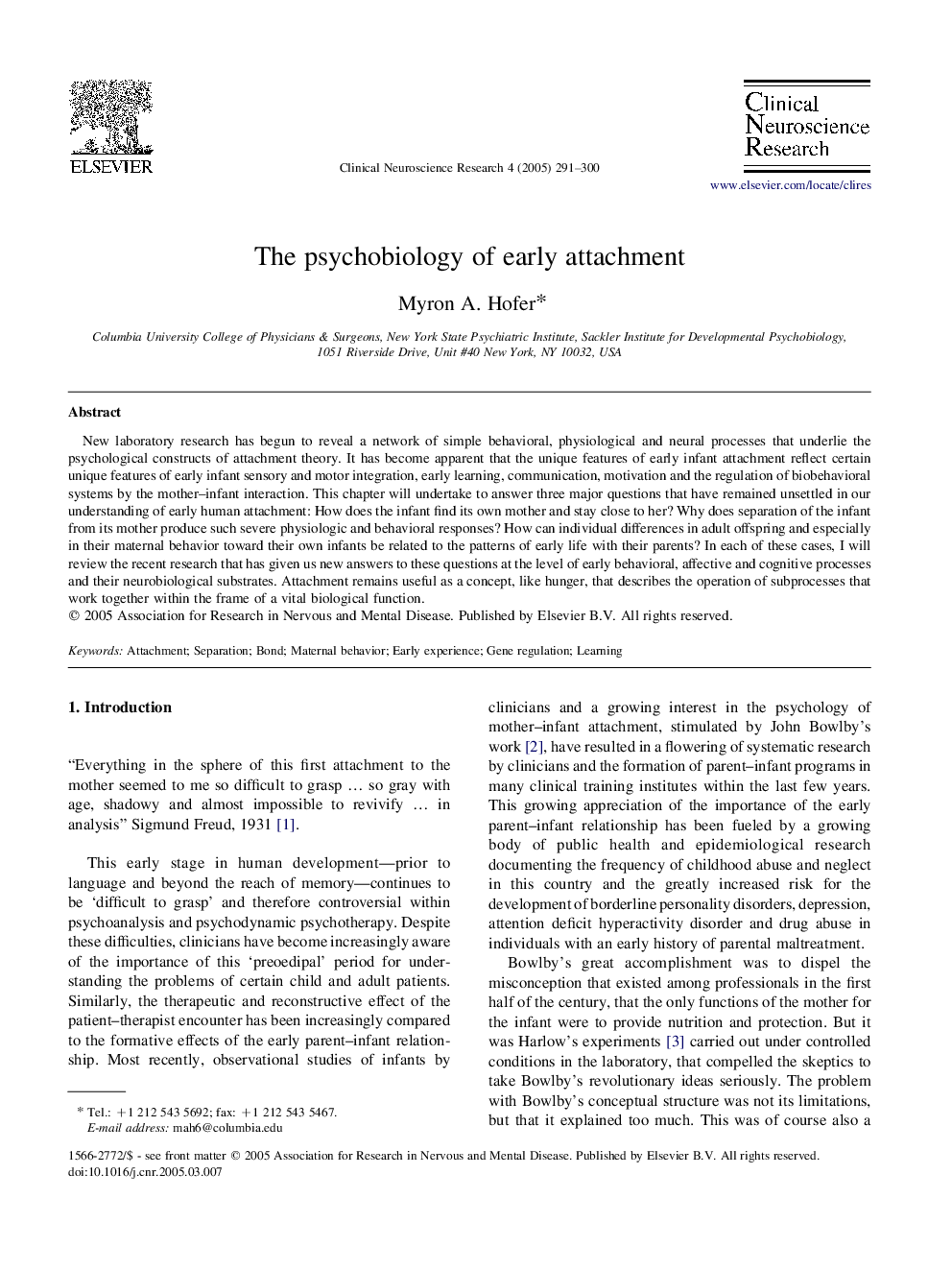| Article ID | Journal | Published Year | Pages | File Type |
|---|---|---|---|---|
| 9189907 | Clinical Neuroscience Research | 2005 | 10 Pages |
Abstract
New laboratory research has begun to reveal a network of simple behavioral, physiological and neural processes that underlie the psychological constructs of attachment theory. It has become apparent that the unique features of early infant attachment reflect certain unique features of early infant sensory and motor integration, early learning, communication, motivation and the regulation of biobehavioral systems by the mother-infant interaction. This chapter will undertake to answer three major questions that have remained unsettled in our understanding of early human attachment: How does the infant find its own mother and stay close to her? Why does separation of the infant from its mother produce such severe physiologic and behavioral responses? How can individual differences in adult offspring and especially in their maternal behavior toward their own infants be related to the patterns of early life with their parents? In each of these cases, I will review the recent research that has given us new answers to these questions at the level of early behavioral, affective and cognitive processes and their neurobiological substrates. Attachment remains useful as a concept, like hunger, that describes the operation of subprocesses that work together within the frame of a vital biological function.
Related Topics
Health Sciences
Medicine and Dentistry
Clinical Neurology
Authors
Myron A. Hofer,
